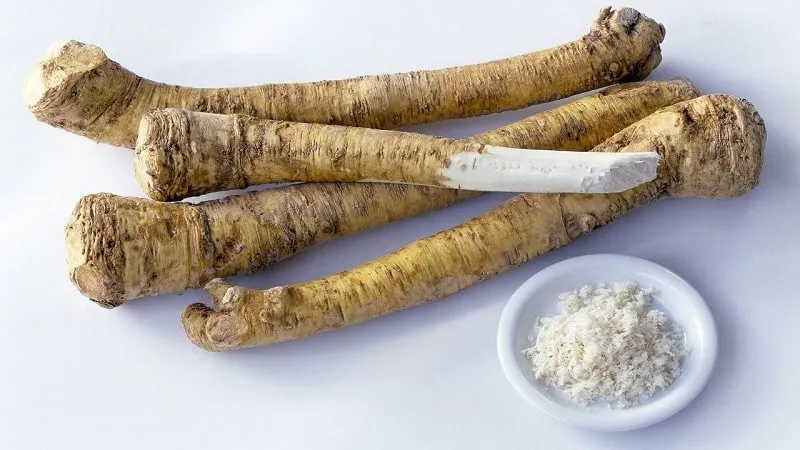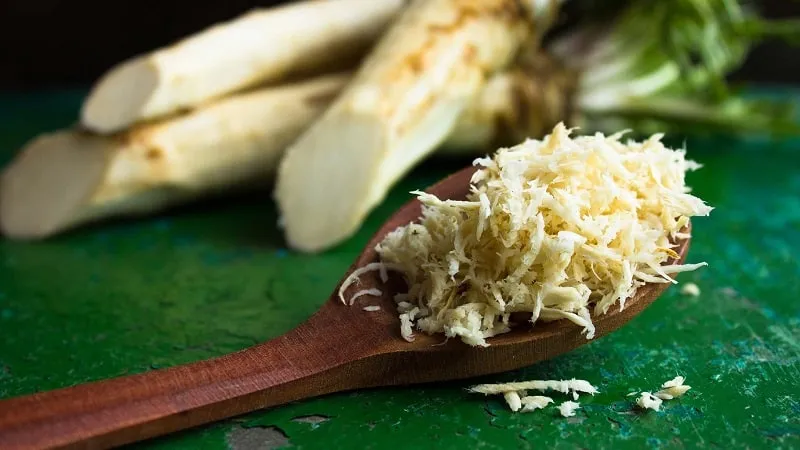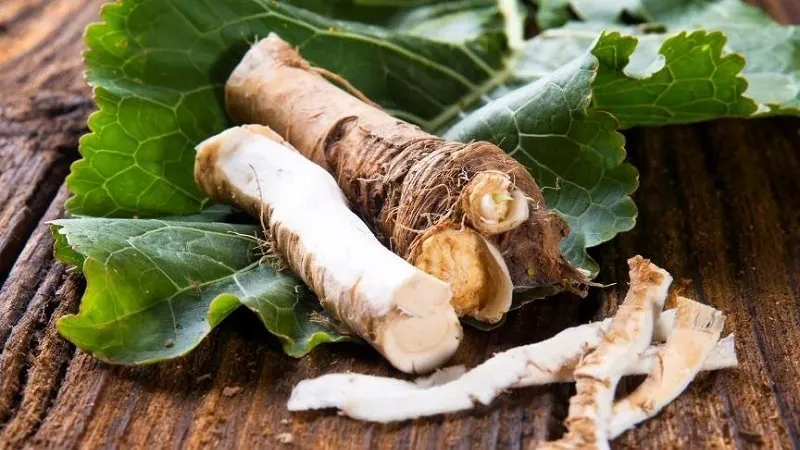Horseradish root is a unique product with medicinal properties and a bold flavor. It can be consumed fresh or dried, and is used to make tinctures and preserves.
Learn how to store horseradish root at home without losing its beneficial qualities.
Table of contents
Selecting and Preparing Horseradish for Long-Term Storage
Horseradish is harvested when its leaves begin to yellow. Care must be taken to avoid damaging the roots. Shake off excess soil, but avoid washing — this reduces shelf life. Trim all leaves.
Note. To extend freshness, treat cut areas with an antiseptic. Iodine solution is recommended.
Inspect the roots carefully. Discard any with damage, rot, or pest infestations.

After sorting, choose a storage method:
- Drying;
- Cellar storage;
- Freezer or refrigerator;
- Preserving.
Preparing Horseradish
Harvest horseradish in autumn. Dig carefully to avoid root damage. Brush off soil — washing is unnecessary if storing in a cellar, as excess moisture harms longevity.
Remove all leaves and treat cuts with iodine to prevent fungal growth. Air-dry roots for 24 hours in a ventilated area.
Note. Sort roots carefully: damaged ones should be processed immediately, while intact roots can be stored in a cellar.
Where to Store Horseradish Root
Several methods exist for storing fresh or dried horseradish.
Most commonly, it’s kept in refrigerators, freezers, or cellars. Other options include preserving.
Refrigerator/Freezer
In urban homes, store horseradish in the refrigerator. Select roots under 25 cm, brush off soil, and wrap in perforated cling film. This preserves freshness for 3 weeks on the vegetable shelf.
Freezing is another effective method. Horseradish retains nutrients for up to 6 months at low temperatures. Peel, dice, and pat dry before portioning into containers or freezer bags.
Cellar
Ideal for rural households, cellars provide optimal storage. Horseradish tolerates proximity to other vegetables. Ensure proper ventilation and moderate humidity. Address mold or pests before storage.
Wooden crates with river sand work best. Layer roots without contact, covering with sand. Check monthly for spoilage. Add damp sand periodically to prevent drying.
Important! In cellars, horseradish stays fresh for 6–9 months.
Storage Methods
Multiple techniques preserve horseradish through winter.

Fresh Storage
Fresh storage maximizes flavor retention. In apartments, use balcony boxes layered with peat or sand (0…+3°C, 80–90% humidity).
Grated horseradish mixed with vinegar keeps for a year in sealed jars. Once opened, use promptly.
Drying
This popular method preserves horseradish long-term while maintaining nutrients and taste. Dried powder enhances sauces and dishes.
Step-by-step:
- Peel and slice roots thinly. Arrange on a baking tray.
- Dry in a preheated oven at 60°C for 1.5 hours.
- Check texture — properly dried roots snap crisply.
- Grind using a blender or grater.
Store powder in airtight glass jars for up to 2 years.
Preserving
Many recipes transform horseradish into flavorful condiments. One classic method:
- Peel and grate 1 kg horseradish (wear goggles — fumes irritate eyes).
- Boil 250 ml water with 1 tbsp each salt and sugar.
- Mix with grated horseradish.
- Jar tightly and refrigerate (+5°C max) for 2 months.
For extended preservation, add 125 ml apple cider vinegar before boiling.
Note. Serve mixed with crème fraîche for traditional European flair.
Storing Horseradish Leaves
Leaves make excellent seasonings and pickling aids. Freeze washed, dried leaves whole in bags.
Tip. Add frozen leaves directly to dishes — no thawing needed.
Dried powdered leaves store well in spice jars, perfect for meats and soups. They also prevent mold in pickled foods.

Shelf Life
Root storage durations:
- Cellar — 9 months;
- Balcony — 6 months;
- Freezer — 6 months;
- Refrigerator — 1 month;
- Dried — 2 years.
Leaf storage durations:
- Freezer — 9 months;
- Refrigerator — 3 weeks;
- Dried — 1 year.
Conclusion
Both horseradish roots and leaves offer health benefits and culinary versatility. Proper storage — whether drying, freezing, or cellaring — ensures year-round availability. Follow these guidelines to maintain quality for 6–9 months.







